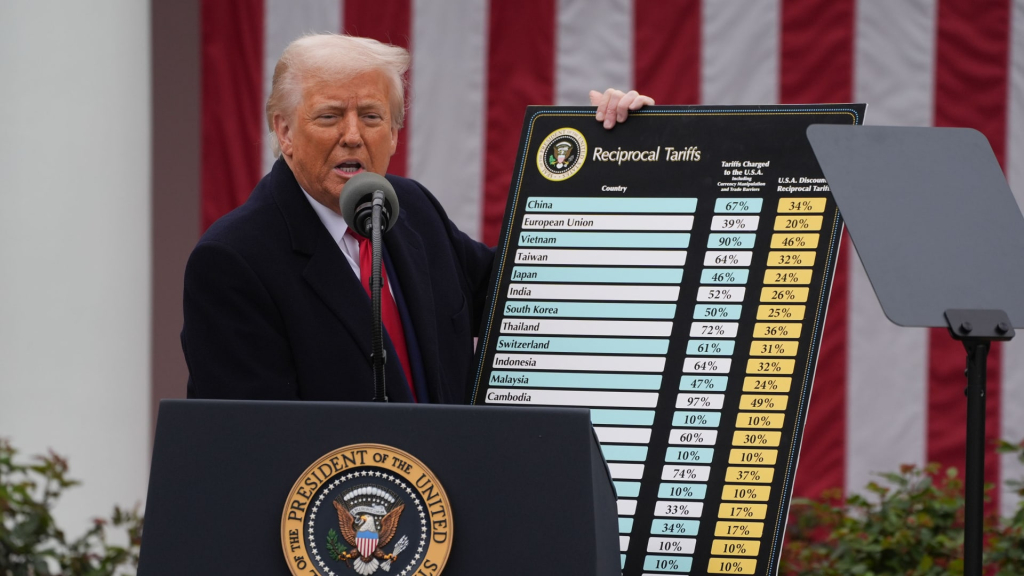The future of President Trump’s tariffs is now in question following a series of recent court decisions.
Even if the judicial ruling that blocks certain country-specific tariffs is upheld, tariffs that remain in force—particularly on items like steel and automobiles—are projected to impose an annual cost of nearly $1,000 on consumers, according to a new study from the Yale Budget Lab.
“It does pinch” the wallets of consumers, acknowledged Ernie Tedeschi, director of economics at the Yale Budget Lab and former chief economist at the White House Council of Economic Advisers during the Biden administration.
Tariffs function as a tax levied on imports, paid by U.S. entities. Businesses typically pass on a portion of these costs to consumers.
Nonetheless, Tedeschi pointed out that the financial impact of the remaining tariffs is “a far cry” from the potential costs if the country-specific tariffs had stayed in place.
On Wednesday, the U.S. Court of International Trade ruled against the country-specific tariffs, which included a baseline 10% tariff on several nations, as well as additional charges on Canada, Mexico, and China related to fentanyl trafficking allegations.
A panel of three judges determined that Trump overstepped his authority by employing the International Emergency Economic Powers Act to enforce these import duties.
A temporary halt to the lower court’s order was issued by an appeals court on Thursday, pending further review.
Tariffs on Steel, Aluminum, and Automobiles Persist
Meanwhile, 25% tariffs on steel, aluminum, automobiles, and auto parts remain in effect, in addition to certain tariffs on China instituted during Trump’s initial presidency and expanded under Biden, as noted by economists Jennifer McKeown and Stephen Brown of Capital Economists in a Thursday report.
These tariffs were enacted under different legal frameworks.
If the lower court’s ruling stands, the remaining tariffs could reduce consumer purchasing power by $950 on average in 2025, according to the recent Yale Budget Lab analysis. This would translate to a 0.6% increase in consumer prices, the study revealed.
More from Personal Finance:
Trump administration eliminates Biden-era restrictions on cryptocurrency in 401(k) plans
Trade schools might benefit from the ongoing competition between Trump and Harvard
Legal decisions challenge Trump’s strategy on federal student loans
From a consumer perspective, the court’s initial ruling—if upheld—could save households more than $1,800 this year, as Tedeschi explained.
In contrast, if the country-specific tariffs were maintained, the average household could experience a loss of about $2,800 in 2025, according to Tedeschi’s analysis.
In that scenario, he noted, consumer prices would be expected to rise roughly 1.7% this year.
McKeown and Brown estimate that the court’s ruling would decrease the effective tariff rate from 15% to 6.5%. They noted it was 2.5% at the start of the year.
“The most direct impact” of the remaining tariffs will be felt in the automotive market, Tedeschi mentioned, forecasting that car prices might increase by around 8% this year and 5% over the longer term.
Additionally, since steel and aluminum are critical components in a variety of consumer goods, their tariffs will influence prices across multiple sectors, including homebuilding and household appliances.
Tariff Uncertainty Remains
The Supreme Court might ultimately decide the fate of Trump’s country-specific tariffs, a process that could extend “many months,” according to McKeown and Brown.
Furthermore, they noted that this ruling is unlikely to signify the end of tariff measures due to various other avenues through which the Trump administration could impose tariffs.
There are indications from the Trump administration regarding potential tariffs on additional products, such as pharmaceuticals, semiconductors, copper, and lumber.
Tedeschi characterized the recent court ruling as a “landmark decision,” suggesting it won’t necessarily mark the conclusion of tariff discussions.


























